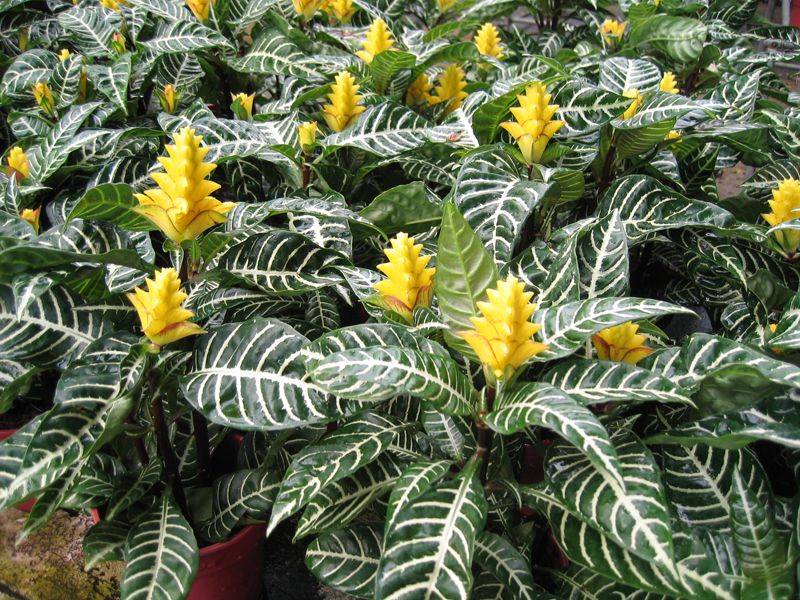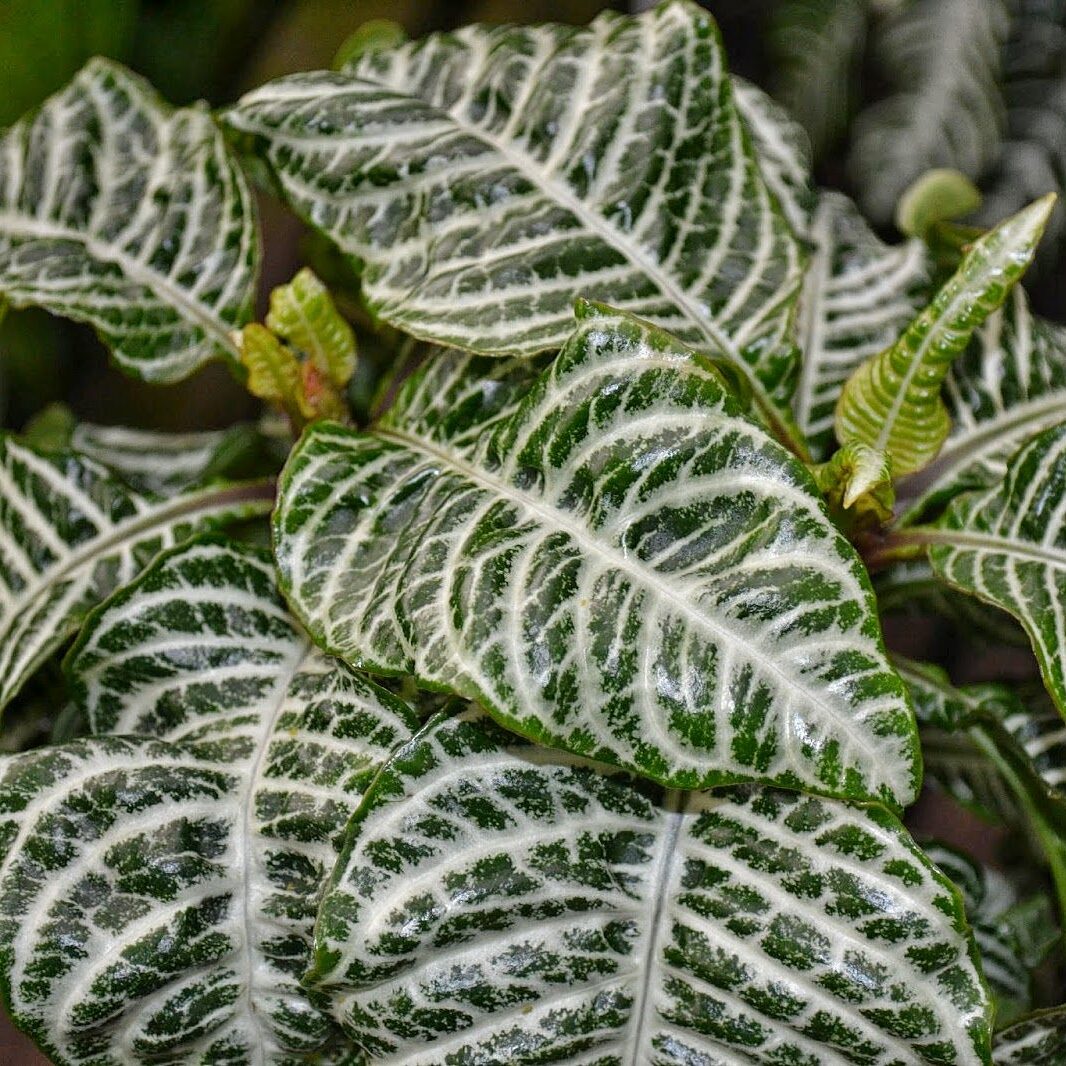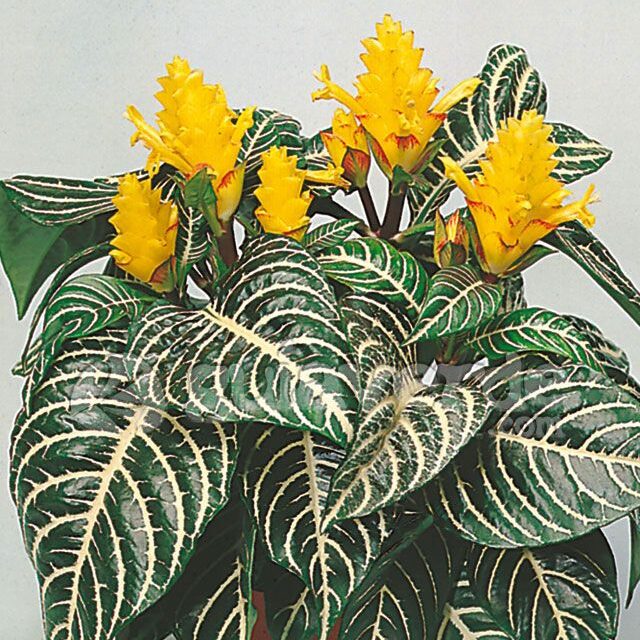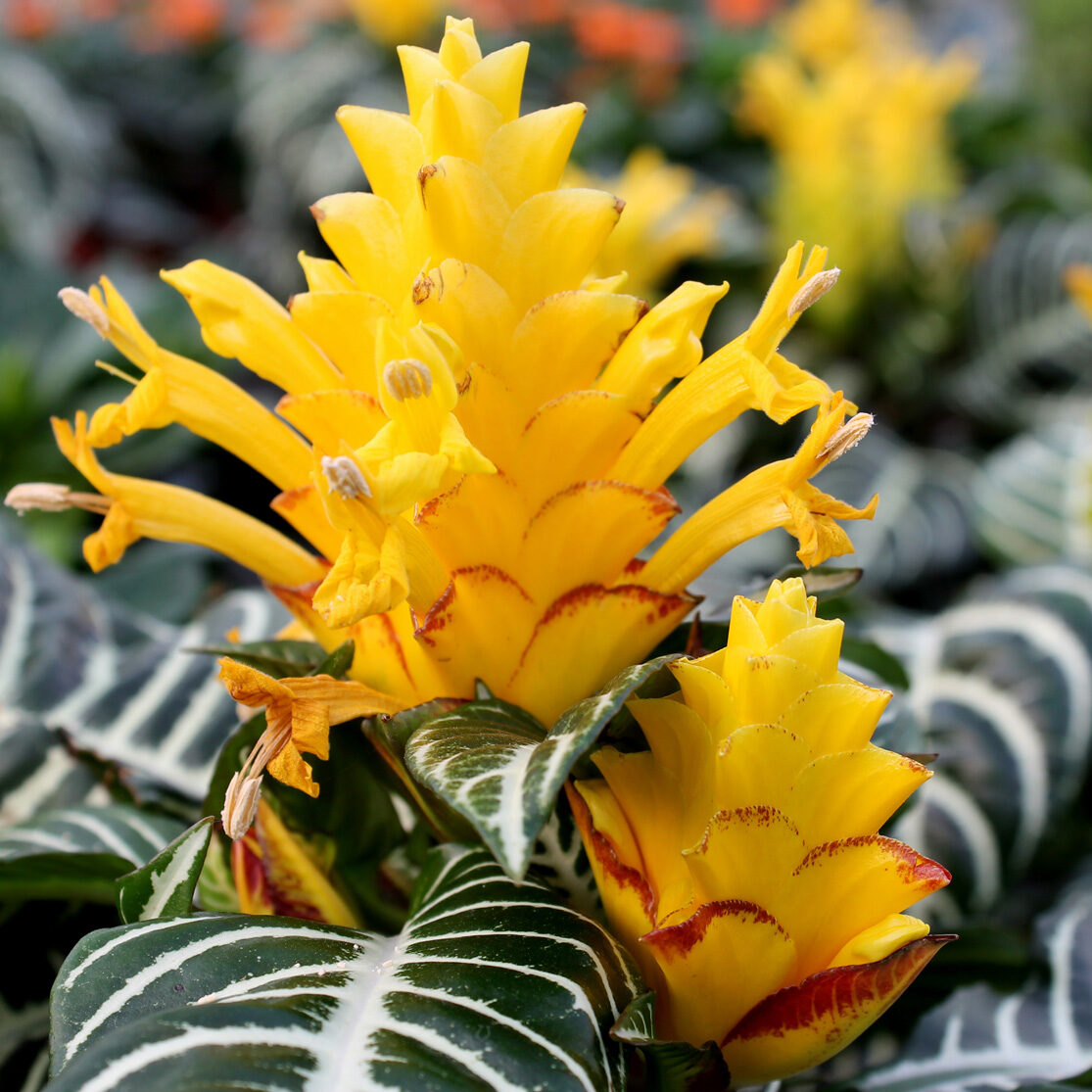Presentation
The zebra plant is a true work of nature’s art, enchanting observers with its distinctively striped leaves that evoke the image of a zebra. Its scientific name, Aphelandra squarrosa, does not do justice to its striking appearance, as its broad, showy leaves are a spectacle in themselves. Native to the tropical forests of Central and South America, the zebra plant blooms with colorful inflorescences that add a touch of exuberance to any space.
Índice
Meaning
The unique beauty of the zebra plant carries deep meaning. The contrasting stripes of its leaves not only attract the eye, but can also remind us of values and symbolisms significant in nature. As a plant that stands out, the zebra plant can represent the individuality and uniqueness of every living being. Its distinctive stripes can also symbolize the harmony found in diversity, as well as the importance of embracing differences. In addition, the zebra plant reminds us of how nature has the ability to surprise us with dazzling patterns, bringing a reminder of the beauty and complexity of the natural world around us.
| Common Name | Zebra plant |
|---|---|
| Botanical Name | Aphelandra squarrosa |
| Family | Acanthaceae |
| Type of Plant | Interior plan |
| Adult size | Up to 60 cm high |
| Solar Exhibition | Indirect Shadow Light |
| Soil Type | Rich in Organic Matter |
| Soil pH | Acid to Neutral (5.5 – 7.0) |
| Flowering Season | Spring to summer |
| Color of Flowers | Colorful inflorescences |
| Native Area | Central and South America |
| Toxicity | Slightly Toxic to Pets |

Essential Care for the Zebra Plant
The zebra plant is a striking addition to any indoor space, but it requires special attention in order to thrive and show off its impressive striped leaves. Here are the essential cares that will ensure the well-being and lasting beauty of this unique plant:
Adequate light
The light requirements of the zebra plant vary according to the environment. Find the right balance between light and shade to keep it healthy:
- Bright Indirect Light: Avoid direct exposure to the sun as it can burn your leaves.
- Partial Shade: Provide filtered light or partial shade to avoid the stress of intense light.
Nutritious Soil
Adequate soil is essential for the health of your zebrafish. Make sure you provide ideal conditions:
- Effective drainage: Use a well-drained substrate to avoid water accumulation.
- Rich in Organic Matter: Provide a soil enriched with organic matter for proper nutrition.
Controlled irrigation
Maintaining a balance in watering is essential to avoid humidity problems and promote lush growth:
- Moderate watering: Let the soil dry out between waterings, avoiding soaking.
- Visual Monitoring: Watch the leaves – if they start to wilt, it’s time to water.
Temperature and humidity
Providing a suitable environment is crucial for the well-being of the zebrafish:
- Mild Temperature: Keep the temperature between 18°C and 24°C for healthy growth.
- Moderate Humidity: A slightly humid environment is preferred, but avoid excess to avoid problems.
Strategic Fertilization
Adequate nutrition is essential to promote flowering and vigorous growth:
- Balanced Fertilizer: Use a balanced liquid fertilizer every 4-6 weeks during spring and summer.
- Appropriate dilution: Follow the dilution instructions to avoid overfeeding.
With this attentive care, you’ll be providing the zebra plant with the ideal environment to thrive and show off its striking striped leaves in all their glory.
Types of Zebra Plant
The zebra plant has a fascinating range of variations, each with its own unique characteristics. Discover some of the most intriguing types of this captivating plant:
- Aphelandra squarrosa ‘Dania’: A compact variety with narrower leaves and more pronounced stripes.
- Aphelandra squarrosa ‘Louisae’: Characterized by its longer leaves and stripes that extend to the edges.
- Aphelandra squarrosa ‘Monticola’: It has shorter, wider leaves with stripes that vary in intensity.
- Aphelandra squarrosa ‘Racket’: Recognized for its broad leaves and stripes that resemble “rackets”.
Each of these types offers a unique touch to the beauty of the zebra plant, enriching your botanical collection with variations in shapes and striped patterns.



Pruning: Importance and Techniques
Pruning plays a crucial role in the health and appearance of the zebra plant. By eliminating damaged or unwanted parts, you promote healthier growth and lush aesthetics. Follow these pruning techniques:
- Removing Wilted Leaves: Remove wilted or yellowed leaves to direct energy towards healthy growth.
- Cutting the Tips: Cut the tips of the stems to promote the emergence of new side shoots.
- Clearing branches: To avoid crowding, remove branches that are too close together.
Methods of Propagation
Expanding your zebra plant collection is an exciting adventure. Try these propagation methods:
- Stem cuttings: Cut off a healthy section of the stem and plant it in moist soil to grow roots.
- Clump division: Carefully separate lateral cuttings from the mother plant and replant them in separate pots.
Step by step on how to plant
Planting a new zebra plant requires attention and care. Follow this step-by-step guide to ensure a successful transplant:
- Pot choice: Choose a pot with good drainage and the right size for the seedling.
- Soil preparation: Fill the pot with a substrate rich in organic matter.
- Careful transplant: Remove the plant from the original pot and plant it in the new pot, adding soil all around.
- Initial watering: After transplanting, water carefully to help the plant establish itself.
- Appropriate Maintenance: Place the plant in a place with indirect light and follow the necessary care.
By mastering the art of pruning, propagating and planting the zebra plant, you will be able to cultivate and multiply this spectacular species, enjoying its striped beauty and enriching your space with its unique presence.
Most common pests and diseases
The zebra plant can face challenges related to pests and diseases. Keep an eye out for these potential problems:
- Mites: Small insects that cause yellow spots on leaves.
- Bugs: Insects that attach themselves to leaves, sucking out the nutrients.
- Root rot: Caused by excess moisture, it can lead to root rot.
Common Problems and Their Solutions
When faced with problems, quick action is essential. Here are some solutions to common issues:
- Leaf spots: Usually caused by mites or fungi. Remove the affected leaves and treat with insecticidal soap.
- Cochineals: Clean the cochineals with a soft brush soaked in soap and water.
- Excess Moisture: Avoid excessive watering and improve soil drainage.
Advanced Care and Maintenance Tips
Increasing your care as your relationship with the zebra plant matures can result in even more rewarding cultivation:
- Plant rotation: Rotate the pot occasionally to ensure that all parts receive even light.
- Use of Humidity: Increase humidity with regular spraying, especially in drier environments.
- Regular Pruning: In addition to basic pruning, remove wilted flowers to encourage continuous flowering.
- Occasional repotting: Every 1-2 years, change the pot and substrate to maintain the plant’s vigor.
With this knowledge of pests, solutions, advanced care and maintenance tips, you’ll be prepared to face any challenge and promote healthy, vibrant zebra plant growth. Your dedication will be rewarded with the spectacular sight of striped leaves and the pride of growing this botanical gem in your space.

Surprising facts
- Tropical Origin: The zebra plant is native to the tropical forests of Central and South America, where it thrives under the dense shade of trees.
- Markable Stripes: Its striped leaves are an adaptation that helps it absorb light efficiently, especially in the shady conditions of its natural habitat.
- Hidden Flowers: The flowers of the zebra plant are grouped in eye-catching inflorescences, which often go unnoticed due to their shape hidden among the leaves.
Debunking Myths
- Toxic to Animals: Although it is slightly toxic, the zebra plant is not highly harmful to pets if ingested in small quantities.
- Incompatible with Indoor Environments: With proper care, the zebra plant can thrive indoors, as long as the light and humidity conditions are met.
The Beauty of Discoveries
By immersing yourself in the curiosities and myths surrounding the zebra plant, you can connect even more with this unique plant. Understanding its history, characteristics and even debunking mistaken beliefs, allows you to grow the zebra plant with confidence and appreciate its beauty in a deeper way.
Conclusion
Along this journey through the zebra plant, we dive into a world full of uniqueness and botanical beauty. Its striped leaves, vibrant colors and striking presence enrich any environment where it blooms.
We learn about the essential care it requires, from attention to light and soil to the importance of pruning and propagation. We explore the diverse variations of this enchanting plant, each one bringing a unique touch to your collection. In addition, we debunk myths and discover curiosities surrounding it, allowing us to appreciate it with knowledge and respect.
By growing the zebra plant, you not only bring a piece of nature into your space, but also experience the pleasure of caring for a species that has a rich history and deep meanings. Whether as a visual highlight or a source of inspiration, the zebra plant is sure to continue to delight and enrich your botanical world.
Frequently Asked Questions
How often to water Aphelandra?
Water the Aphelandra when the top of the soil is dry to the touch, usually every 1-2 weeks, but adjust according to the humidity in the room.
Why does Aphelandra wilt?
Aphelandra can wilt due to lack of water, overwatering, exposure to extreme temperatures or root problems.
How do I care for a potted Aphelandra plant?
Provide bright indirect light, water when the soil is dry, maintain moderate humidity, fertilize every 4-6 weeks during active growth and protect from draughts.
What is the zebra plant good for?
The zebra plant, or Aphelandra, is valued as an ornamental plant because of its striped leaves and showy inflorescences, bringing beauty and color to indoor spaces.
How to care for a zebra plant?
Provide indirect light, keep the soil moist but not soggy, water sparingly in winter, maintain humidity around the plant, avoid draughts and protect against pests.







